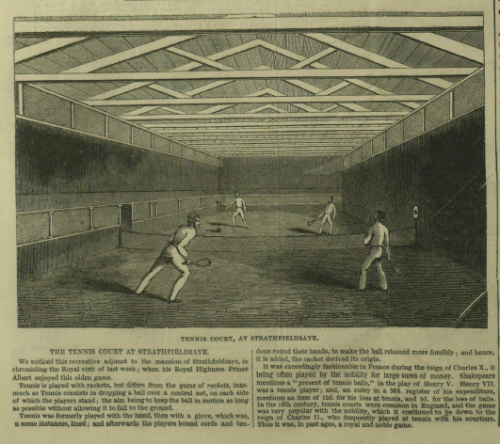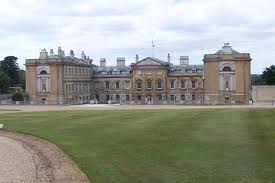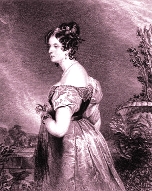
Many people may be surprised to learn that the Duke of Wellington was a keen tennis player – so much so that he had an indoor court built at Stratfield Saye, where he and Prince Albert played a few sets during Queen Victoria and Prince Albert’s visit to Stratfield Saye in 1845, which was reported in the Illustrated London News.
From A History of Stratfield Saye by the Reverend Charles Griffith, Jon Murray 1892:
“. . . On the west side of the road face of the mansion, to the right front, and This building, which is of full size, occupies the site and is built upon the old walls of Lord Rivers’ riding-school. . . At the termination of the university course of the Marquis of Douro, who was afterwards second Duke of Wellington, and of Lord Charles Wellesley, the father of the present duke, the first Duke of Wellington erected this building for the amusement of his sons. The first duke himself for some years frequently played, in the court, and his butler, Phillips, became one of the finest players in England of his day, successively beating all the best French players with whom he contended. . . ”
Tennis had been played in England since the middle ages and Henry VIII had a court at Hampton Court Palace. By the 1820s, the only London tennis court still in operation was the James Street court near the Haymarket. The members of this newly revived club invited the Duke of Wellington to join them in 1820, which invitation he gladly accepted. But other aristocratic families also partook of the sport –
From a letter written by Lady Holland, Holland House, 1st Jany., 1816 to Mrs. Creevey [in Brussels] –
“. . . According to the song, ‘London is out of town’ the country houses are overflowing. The love of tennis is come so strongly upon Lord Holland that he has persuaded me rather reluctantly to go once more to Woburn for 3 or 4 days, in order that he may play a few setts. The plea which makes me yield is that I believe exercise keeps off the gout.”

The Sporting Magazine for February 1795 gives us the following description of the Woburn tennis courts – “THE Tennis Court and Riding House (with apartments between to dress in) forms a building 266 feet 8 inches long, and 49 feet 6 inches wide, the whole front of which is stone: The roof is a flat one, and covered with a composition of tar, chalk, etc., instead of lead. There are flues run along the walls, and under the pavement of the Tennis Court, to keep off the damps.”
 |
| Francis Russell, 5th Duke of Bedford |
It was Francis Russell, 5th Duke of Bedford who improved Woburn Abbey, adding a Riding School and the Tennis Court, which would later quite literally be the death of him. It was while playing a game of tennis that the accident occurred which eventually proved fatal. He was struck by a ball; a lingering illness ensued, and he died on the 2nd March 1802.The editor of Horace Walpole: Lord Orford’s Letters to the Countess of Ossory, transcribes from the memoranda of Lord Ossory the following account of the death of Francis, fifth Duke of Bedford in 1802:— ‘On February 27th 1802, I went over to Woburn, hearing of the Duke of Bedford’s dangerous illness. There I found Dr. Kerr. …. The progress of the disease was not favourable, and the symptoms were very bad on Monday morning, till twelve; from that time till five or six, hopes began to revive; then they all vanished, and he was given over, and on Monday morning, March the 2d, about half-past eleven, he expired in a manner in Lord John’s arms.
“Thus died Francis, Duke of Bedford, with a sort of similarity of fate to his father, both of whom I loved with much affection and attachment.”
As lamentable as Francis’s death was, it almost had dire consequences for the beautiful Lady Georgina Gordon, who had been engaged to him. Her mother, the Duchess of Gordon, was not going to let the Dukedom of Bedford escape her, and after Lady Georgina had left off her mourning for her betrothed, she became engaged to his brother and successor, John, sixth Duke of Bedford, to whom she was married a year later. She went on to have ten children.
 |
| 1816 Plan of Woburn Abbey – Wikipedia |
But back to tennis . . . From Wikipedia – A plan of the house and “pleasure ground” at Woburn from Hortus Gramineus Woburnensis (1816), a book about horticultural experiments conducted at Woburn. The top is east. A: The house. The whole of the top (east) wing and the eastern end of the north and south wings have been demolished. B: Stable/service blocks. These survive and one now houses the Woburn Antiques Centre. C: The riding school and the real tennis court, which have been demolished. D: The long rectangle at the right of the southern service block is the sculpture gallery, which survives In 1816 the main entrance was on the eastern side of the house, and was reached via a grand arch between the riding school and real tennis court. After the demolition the West Hall in the centre of the West Front became the main entrance once again.
In his Arboretun et Fruticetum Britannicum: or, The Trees and Shrubs of England, Volume 2 (1838), John Claudius Loudon describes the grounds at Woburn and tells us that there is “a passage under the Cape heathery, which forms a portion of a covered way, leading from the mansion to the different objects of interest adjoining it; such as the green-house, sculpture gallery, tennis-court, Chinese dairy, plant-stoves and palm-house now erecting, and finally to the pleasureground, including the aviary, arboretum, salictum, grass-garden, American garden, etc.”
From Tennis by John Moyer Heathcote 1890, “In our own country the game was beginning to lose its popular character, although still played by the higher classes of society. Many old courts were abandoned or destroyed, and we hear of the construction of three only in the latter half of the century: the Duke of Richmond’s at Goodwood, the Duke of Bedford’s at Woburn, and the court in Tennis-court Road, Cambridge, erected in 1734, recently pulled down and replaced by the new buildings of Pembroke College.
“There is, however, no probability of the last age of this eventful history passing into mere oblivion, for the nineteenth century has witnessed a renewed and constantly increasing enthusiasm for Tennis, shown by the number of courts built by public and private enterprise, on improved lines, and equipped with modern requirements, and by the interest taken in all important matches.”
Whilst tennis is still played in England, alas, the courts at Woburn have, indeed, passed into oblivion. During the First World War parts of the Abbey, the riding school and indoor tennis court (now demolished), were converted into a temporary ward for wounded soldiers; some 2,000 patients passed through the Abbey Hospital.

Now I know why I have never found tennis an engaging activity. Obviously very dangerous. LOL. I love Woburn Abbey, however, without the tennis cuort.
I love all of the details about Woburn Abbey! I find house plans and garden plans fascinating. I have no idea why. And I am still trying to decipher how on earth the poor man was killed by a tennis ball. Good heavens! Were the balls made of wood?
I can't fathom what kind of tennis injury could result in death, either! Much better to sit on the sidelines and sip iced cocktails.
Wow. Artie like tennis. How cool.